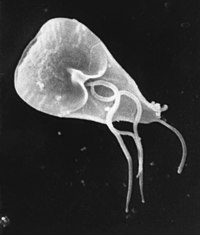
Plant-derived secretory component forms secretory IgA with shiga toxin 1-specific dimeric IgA produced by mouse cells and whole plants
Sign Up to like & getrecommendations! Published in 2018 at "Plant Cell Reports"
DOI: 10.1007/s00299-018-2358-6
Abstract: Key messageA key module, secretory component (SC), was efficiently expressed in Arabidopsis thaliana. The plant-based SC and immunoglobulin A of animal or plant origin formed secretory IgA that maintains antigen-binding activity.AbstractPlant expression systems are suitable… read more here.
Keywords: plant; secretory iga; produced mouse; kdel ... See more keywords

Human Fc Receptor-like 3 Inhibits Regulatory T Cell Function and Binds Secretory IgA.
Sign Up to like & getrecommendations! Published in 2020 at "Cell reports"
DOI: 10.1016/j.celrep.2019.12.099
Abstract: Human Fc receptor-like 3 (FCRL3) is an orphan receptor expressed by lymphocytes, including regulatory T cells. FCRL3 is implicated in several autoimmune diseases; however, its function on regulatory T cells is unknown. We discovered that FCRL3 stimulation… read more here.
Keywords: human receptor; receptor like; regulatory cell; secretory iga ... See more keywords

Functional and structural characteristics of secretory IgA antibodies elicited by mucosal vaccines against influenza virus.
Sign Up to like & getrecommendations! Published in 2017 at "Vaccine"
DOI: 10.1016/j.vaccine.2017.07.093
Abstract: Mucosal tissues are major targets for pathogens. The secretions covering mucosal surfaces contain several types of molecules that protect the host from infection. Among these, mucosal immunoglobulins, including secretory IgA (S-IgA) antibodies, are the major… read more here.
Keywords: mucosal vaccines; secretory iga; vaccines influenza; influenza virus ... See more keywords

Secretory IgA N-glycans contribute to the protection against E. coli O55 infection of germ-free piglets
Sign Up to like & getrecommendations! Published in 2020 at "Mucosal Immunology"
DOI: 10.1038/s41385-020-00345-8
Abstract: Mucosal surfaces are colonized by highly diverse commensal microbiota. Coating with secretory IgA (SIgA) promotes the survival of commensal bacteria while it inhibits the invasion by pathogens. Bacterial coating could be mediated by antigen-specific SIgA… read more here.
Keywords: protection; coli o55; secretory iga; germ free ... See more keywords

Active free secretory component and secretory IgA in human milk: do maternal vaccination, allergy, infection, mode of delivery, nutrition and active lifestyle change their concentrations?
Sign Up to like & getrecommendations! Published in 2020 at "Pediatric Research"
DOI: 10.1038/s41390-020-0966-7
Abstract: Background Free secretory component (free SC) in human milk is a critical constituent of secretory IgA (SIgA) for immune exclusion, but its concentration in human milk is unknown. To evaluate the relationship between free SC… read more here.
Keywords: milk; secretory iga; delivery; human milk ... See more keywords

Conjugated linoleic acid modifies transcriptional cytokine profile and induces early specific secretory IgA response in Giardia lamblia infected mice
Sign Up to like & getrecommendations! Published in 2022 at "Iranian Journal of Basic Medical Sciences"
DOI: 10.22038/ijbms.2022.65796.14471
Abstract: Objective(s): Adaptive immunity is crucial in controlling Giardia lamblia infection in the intestinal mucosa, and some dietary lipids may improve mucosal immune function. The aim of this study was to evaluate conjugated linoleic acid (CLA)… read more here.
Keywords: giardia lamblia; response; infection; secretory iga ... See more keywords

Heterologous Immune Responses of Serum IgG and Secretory IgA Against the Spike Protein of Endemic Coronaviruses During Severe COVID-19
Sign Up to like & getrecommendations! Published in 2022 at "Frontiers in Immunology"
DOI: 10.3389/fimmu.2022.839367
Abstract: Defining immune correlates of disease severity is important to better understand the immunopathogenesis in COVID-19. Here we made use of a protein microarray platform to detect IgG- and IgA-reactive antibodies in sera and saliva respectively,… read more here.
Keywords: iga; immune responses; severe covid; secretory iga ... See more keywords